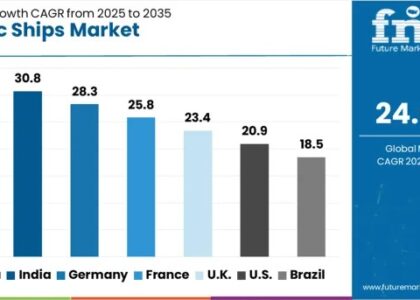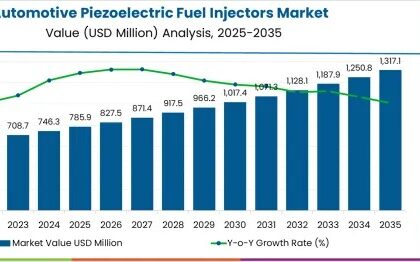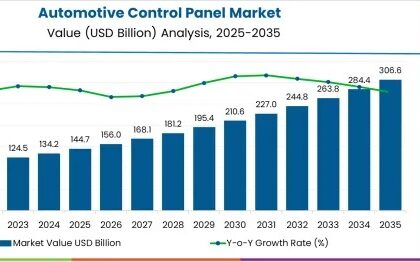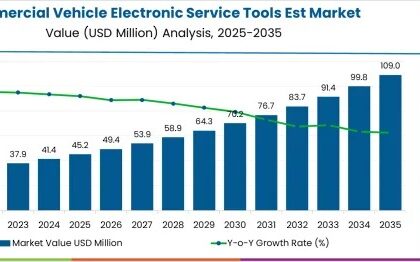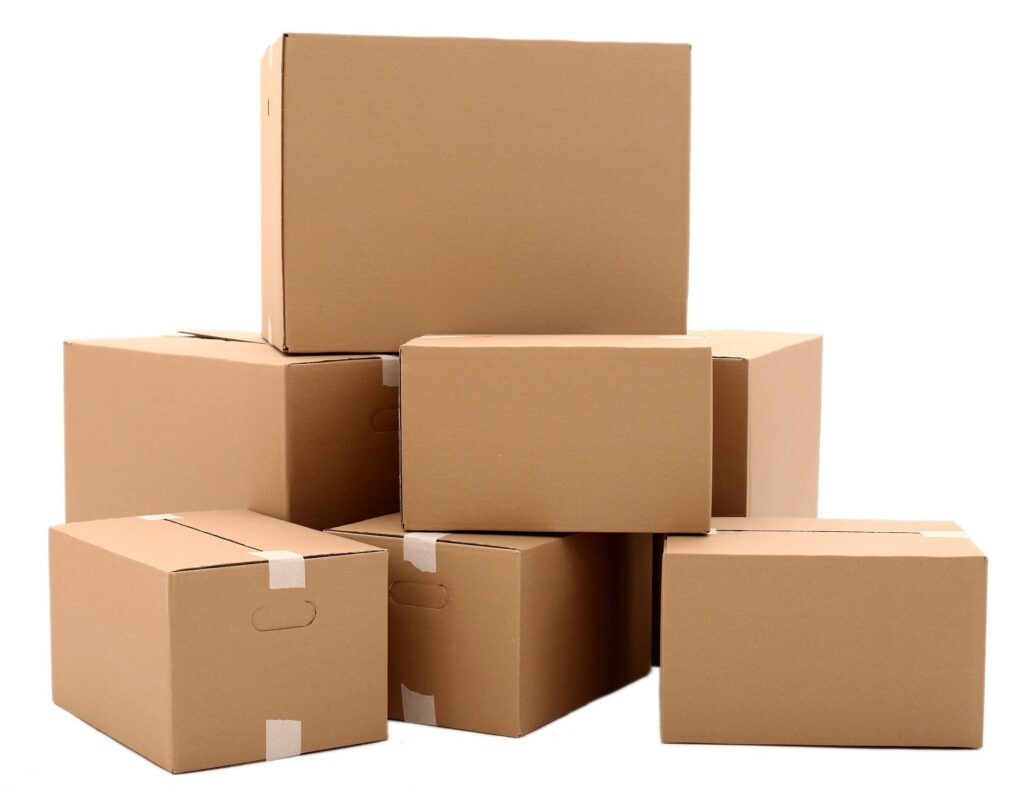
The packing boxes market is expected to maintain a steady Compound Annual Growth Rate (CAGR) of 5% until 2033. This anticipated growth will see the industry size expand from US$ 141.44 billion in 2023 to reach US$ 230.37 billion by 2033. Prior to this, the packing boxes industry experienced a CAGR of 2.5% from 2018 to 2022, culminating in a market size of US$ 134.7 billion in 2022.
The global packing boxes industry is poised for stable growth, primarily driven by the burgeoning food and beverage sector. With the continuous rise in online sales, the entire cardboard packaging sector is expected to thrive in the foreseeable future.
Packing boxes serve as customized packaging solutions widely utilized for various purposes. Key end-use industries include food and beverage manufacturing, household electrical appliances, cigarette manufacturing, and medical instrument manufacturing, all of which rely on packaging solutions, making packing boxes a prevalent choice.
Marketers leverage the versatility of cartons by incorporating eye-catching artwork and graphics, allowing them to effectively target specific customer groups. Cardboard materials are well-suited for printing and branding, enabling businesses to display their logos, company names, and promotional information on their packaging.
Additionally, packing boxes offer cost advantages due to their lightweight nature, resulting in lower transportation expenses. However, one of the primary challenges to the demand for packing boxes is the emergence of alternative packaging materials. Buyers now have a wide array of container options, including plastic, metal, and glass, which adds to the competitive landscape of the packaging industry. Despite this, the continued growth in online sales and the need for sustainable packaging solutions are expected to sustain the demand for packing boxes in various sectors.
Key Points:
- Growing Demand: The increasing global trade and e-commerce activities are driving the demand for packing boxes. Industries such as retail, logistics, and manufacturing heavily rely on packing boxes for efficient packaging and shipping.
- Versatility and Customization: Packing boxes come in various sizes, shapes, and materials, offering versatility and customization options. Businesses can choose the most suitable boxes to accommodate different products, ensuring optimal protection and space utilization.
- Sustainable Packaging Solutions: With the growing focus on sustainability, packing boxes made from eco-friendly materials, such as recycled cardboard or biodegradable materials, are gaining popularity. Businesses are adopting sustainable packaging practices to meet consumer expectations and environmental regulations.
- Branding and Marketing Opportunities: Packing boxes provide an excellent opportunity for branding and marketing. Custom-printed boxes with logos, designs, and product information can enhance brand visibility and create a memorable unboxing experience for customers.
- Technological Advancements: The packing boxes market is experiencing technological advancements, such as improved structural designs and advanced materials. These innovations enhance the strength, durability, and efficiency of packing boxes, ensuring better product protection and cost-effectiveness.
In conclusion, the Packing Boxes Market is driven by the growing demand for efficient packaging solutions, sustainability requirements, customization options, and technological advancements. As industries continue to prioritize safe and sustainable transportation of goods, the market for packing boxes is expected to flourish in the coming years.
The flexible plastic packaging sector is putting a strain on the packing box market. Manufacturers and retailers profit the most from flexible plastic packaging since it reduces package weight, resulting in lower shipping and warehousing costs and the need for much less space. This has a negative impact on the packing box market.
Changing lifestyles and the rising trend of population migration in emerging nations are expected to drive the packing box market. Moving boxes are distinct from standard corrugated boxes and folding cartons in size, shape, and design because, unlike corrugated boxes and folding cartons, they are intended for both product storage and transportation. Corrugated boxes and folding cartons are mostly used for storage. Consumers can choose from a number of sizes and designs of packing boxes to match their individual packing needs.
Televisions, computers, clothes, beds, culinary utensils, and other household and personal belongings can be readily packed and moved from one area to another. Increasing adoption of packing boxes in Latin America, Asia, and the Middle East is expected to boost the packing boxes market throughout the forecast period. A growing middle-class population and increased discretionary income levels are expected to drive the global packing boxes market.
By providing raw material for the packaging sector, the rising paper and cardboard industry is also fuelling the expansion of the packing boxes market. Paper and cardboard output in the world exceeds 400 million metric tonnes per year, and it is predicted to quadruple by the end of the forecast period. For example, the global Paper industry generated $ 20 billion in revenue in 2020.
The expanding adoption of packing boxes in food and beverage packaging, paper, electronics, textiles, personal care, chemicals, glassware, and ceramics is propelling the moving boxes market northward. Furthermore, the e-commerce business is expanding since online shopping offers the comforts of free shipping and hassle-free delivery, as well as return policies.
Key Takeaways:
- By the end of 2026, North America is expected to be the third-largest market for packing boxes, with around 16 percent of the market share.
- Virgin segment leads the packing boxes market with the projected CAGR of 3.8% by 2032.
- Based on box style, the slotted category is predicted to earn the most income in the packing boxes sector between 2020 and 2030.
- Asia Pacific is the world’s largest packing boxes market, with China accounting for over 30% of worldwide output. In addition, the United States supplied about 15% of global manufacturing.
Competitive Landscape:
Companies in the packing boxes market strive to produce new products, expand their operations, and form strategic collaborations with other manufacturers. Major corporations are broadening their product manufacturing capabilities, product portfolios, and global reach as well.
These companies have used a range of growth strategies to improve their market position in packing boxes. Expanding their product variety and geographical presence through expansion, new product development, mergers and acquisitions, and collaboration are all significant growth strategies for these organizations in order to meet the expanding demand for packing boxes from emerging nations.
Some of the recent developments in the packing boxes market include:
Smurfit Kappa Group LLC announced the creation of a new e-commerce corrugated packaging laboratory in the United Kingdom on June 29, 2021, to test and implement new e-commerce solutions that are minimum ISTA certified.
Mondi added a new product, BCoolBox, to its sustainable e-commerce portfolio on February 1, 2021, which will carry fresh produce and cuisine. This product is a corrugated packaging solution with thermo-insulation that ensures food is chilled and stays below 7 degrees Celsius for a minimum of 24 hours without the use of an external cooling device.
Key Segments
By Material Type:
- Virgin
- Recycled
By Board Type:
- Single Face Board
- Single Wall Board
- Double Wall Board
- Triple Wall Board
By Grade Type:
- Liner
- Kraftliner
- Bleached
- Unbleached
- Test Liner
- Bleached
- Unbleached
- Kraftliner
- Fluting Medium
- Semi-Chemical
- Recycled
By Product Type:
- Sloted Box
- Folder Box
- Telescope Box
- Die-Cut Box
By End Use:
- Food
- Beverages
- Electronics & Electricals
- Healthcare
- Textiles & Apparels
- E-Commerce
- Building & Construction
- Personal Care & Cosmetics
- Chemical & Fertilizers
- Others
About Future Market Insights (FMI)
Future Market Insights, Inc. (ESOMAR certified, recipient of the Stevie Award, and a member of the Greater New York Chamber of Commerce) offers profound insights into the driving factors that are boosting demand in the market. FMI stands as the leading global provider of market intelligence, advisory services, consulting, and events for the Packaging, Food and Beverage, Consumer, Technology, Healthcare, Industrial, and Chemicals markets. With a vast team of over 400 analysts worldwide, FMI provides global, regional, and local expertise on diverse domains and industry trends across more than 110 countries.
Join us as we commemorate 10 years of delivering trusted market insights. Reflecting on a decade of achievements, we continue to lead with integrity, innovation, and expertise.
Contact Us:
Future Market Insights Inc.
Christiana Corporate, 200 Continental Drive,
Suite 401, Newark, Delaware – 19713, USA
T: +1-845-579-5705
For Sales Enquiries: sales@futuremarketinsights.com
Website: https://www.futuremarketinsights.com
LinkedIn| Twitter| Blogs | YouTube


